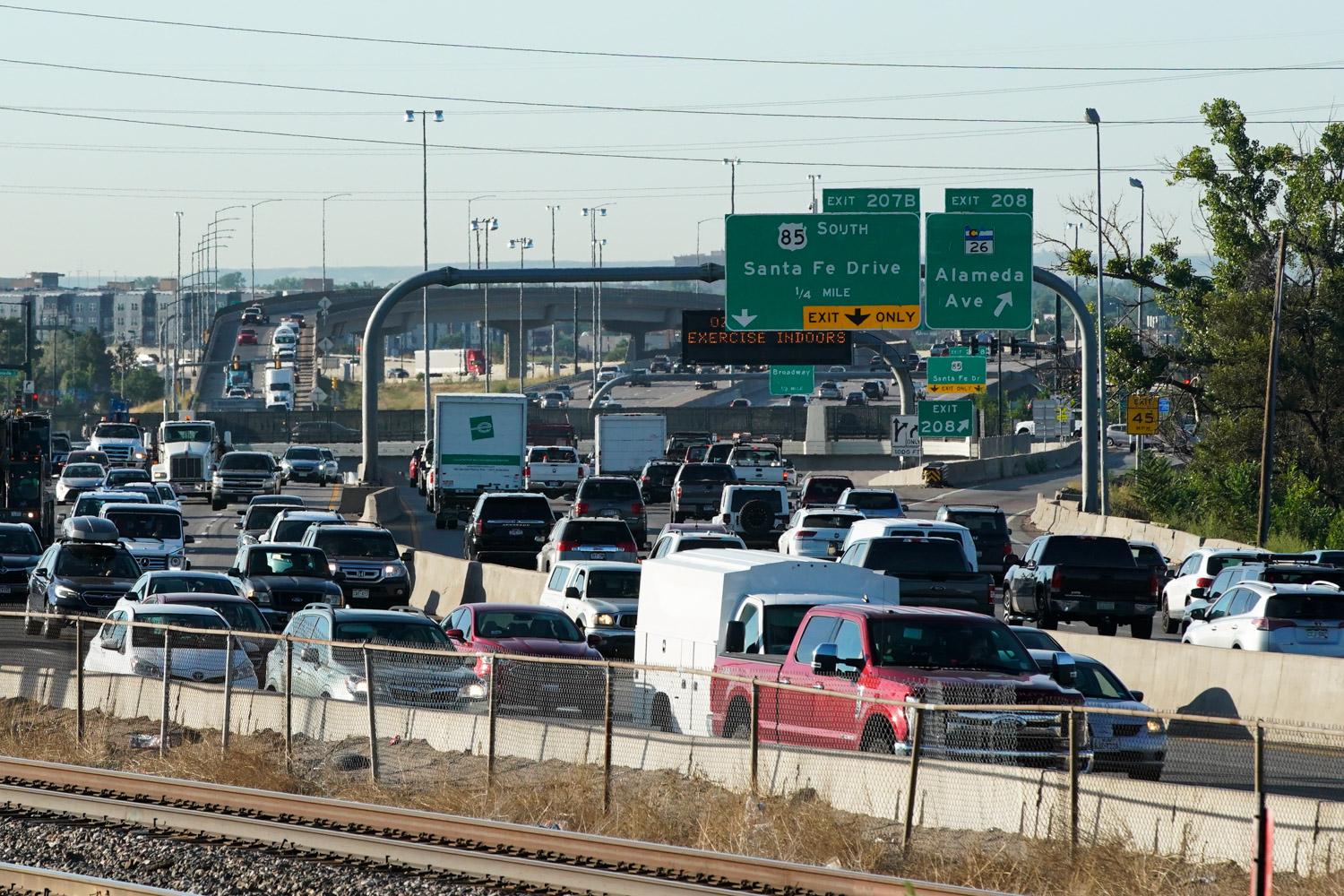
After decades of pouring billions of dollars into a transportation system that favors moving vehicles quickly above all else, the Denver region could see a significant funding shift away from road expansions and toward public transit, pedestrian and bicycle infrastructure.
The board of the Denver Regional Council of Governments, a planning agency governed by local elected officials, will vote on a long-term agenda-setting plan next month that’s been overhauled to comply with a state mandate to reduce greenhouse gas emissions from the transportation sector. That’s now Colorado’s largest single source of climate-warming gasses.
The new plan would ax planned expansions of Interstate 25 and C-470 and cut or minimize similar widenings on smaller roads across the region. It would also move $900 million away from road expansions to fund climate-friendly transportation projects, including projects that would overhaul busy streets to help public buses move faster. That represents about a 10 percent shift in the plan’s overall budget, said Ron Papsdorf, DRCOG’s director of transportation planning and operations.
Though DRCOG directly controls relatively few transportation dollars in the Denver area — most funding is controlled by the Colorado Department of Transportation, the Regional Transportation District and local governments — it has the federally designated role of setting the region's long-term transportation agenda alongside those other government entities.
The new proposal is meant to strike a balance between cars and making cleaner alternatives safer, faster and more convenient to encourage more people to use them, Papsdorf said.
“Our approach has never been to assume that we can just stop all vehicle traffic and travel and get rid of all capacity projects,” he said. “That's why we've been very strategic about the changes we're making.”
The proposed changes are a relatively small part of the state’s larger push to reduce climate emissions 90 percent by 2050.

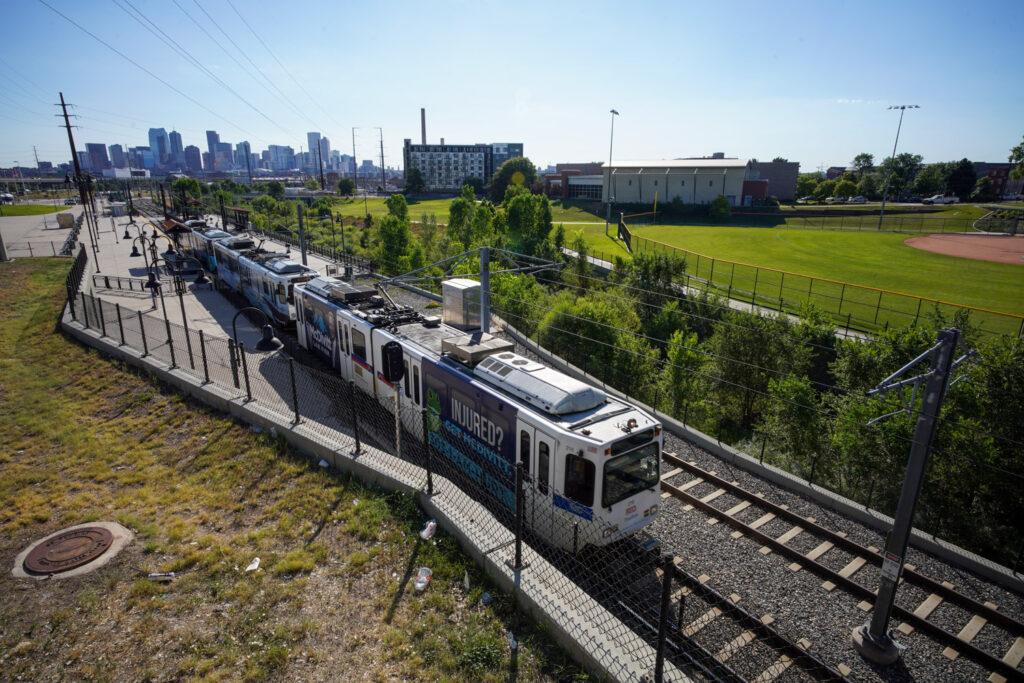
Democratic lawmakers and Gov. Jared Polis put the transportation rethinking in motion. Big reductions in emissions from power utilities are on track, state officials say, as they gradually move from coal and gas to renewables like wind and solar. The transportation sector, also the nation's largest single source of heat-trapping emissions, is a tougher nut to crack.
Most of the state’s transportation strategy relies on a huge shift toward electric and other cleaner vehicles, which requires huge investments in infrastructure and new technologies. State officials and climate-minded legislators, urged along by clean transportation experts, are also trying to incentivize Coloradans to drive less by making buses, trains, walking and cycling safer and more convenient — and cutting highway expansions that would likely have attracted more drivers.
In a state where most residents drive most places, some predict the move away from expanding roads and highways will have political consequences.
“I honestly feel it’s a form of political fad that will likely reverse,” said Republican Douglas County Commissioner and DRCOG board member George Teal, who described himself as skeptical of human-caused climate change. “I do feel that the political pendulum is going to — it’s already started swinging.”
The updated vision for I-25 includes more transit, safety improvements — and no new space for cars.
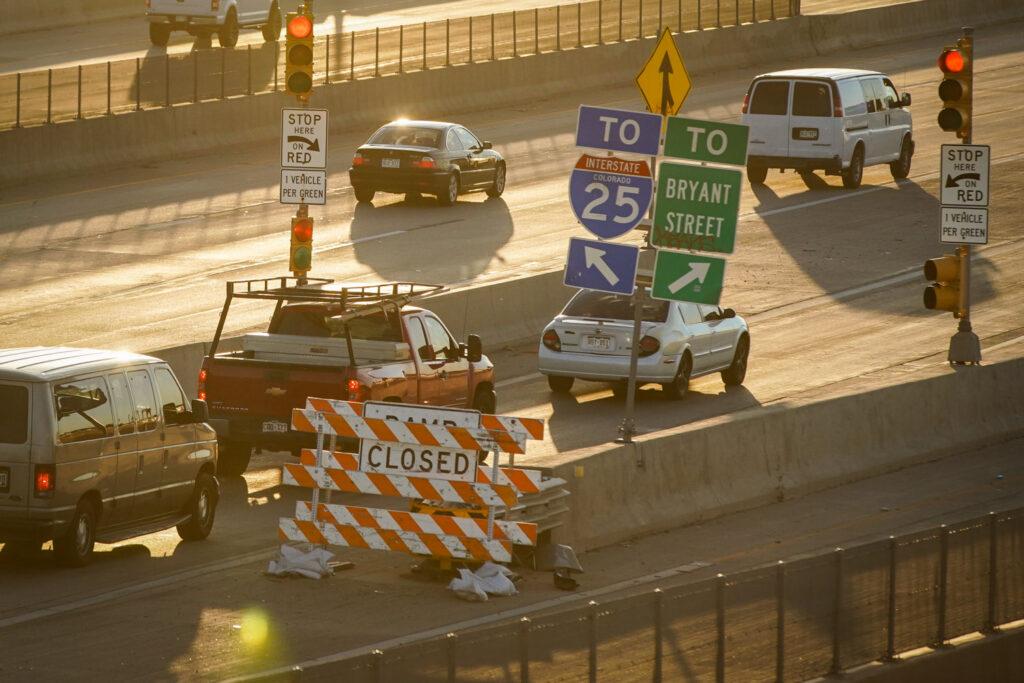
DRCOG’s new plan for I-25 between Santa Fe Drive and downtown Denver would eliminate planned new toll lanes and instead prioritize improvements to transit, pedestrian and bicycle connectivity, and safety.
“There are multiple crashes nearly every day on that corridor that impact people’s lives and contribute to congestion,” Papsdorf said. “We want to address those needs, but we think we can be strategic about how we do that.”
That move would fit with the Colorado Department of Transportation’s new vision for that stretch of I-25.
“Through our planning process, concerns about plans for I-25 through central Denver made clear that a possible future project requires many more discussions, and so we have refocused our efforts along I-25 on safety and operational improvements,” CDOT Executive Director Shoshana Lew said in a statement. “We thank our neighbors and community members for their input."
DRCOG also wants to ditch a planned new toll lane on C-470 between Wadsworth and Interstate 70 and plans to minimize or eliminate planned widenings of a half-dozen arterial streets across the region.
The proposal would accelerate some bus rapid transit projects by a decade. Under the new plan, five “BRT” corridors would be completed by 2030: East Colfax in Denver and Aurora; East Colfax Extension between I-225 and E-470; Federal Boulevard; Colorado Boulevard; and State Highway 119 between Boulder and Longmont.
Wherever possible, such projects would turn over general traffic lanes to buses to help them skip by traffic.
“That's the starting point,” Papsdorf said. “There may be segments of a corridor where you don't have quite the space to do that.”
While DRCOG and local governments would help fund and build the rapid bus lane projects, it would be up to fiscally challenged RTD to operate them. An RTD spokesperson said the agency could do that because it already provides high levels of service in planned rapid bus corridors.
The new plan has garnered praise from environmental advocates and some local elected officials.
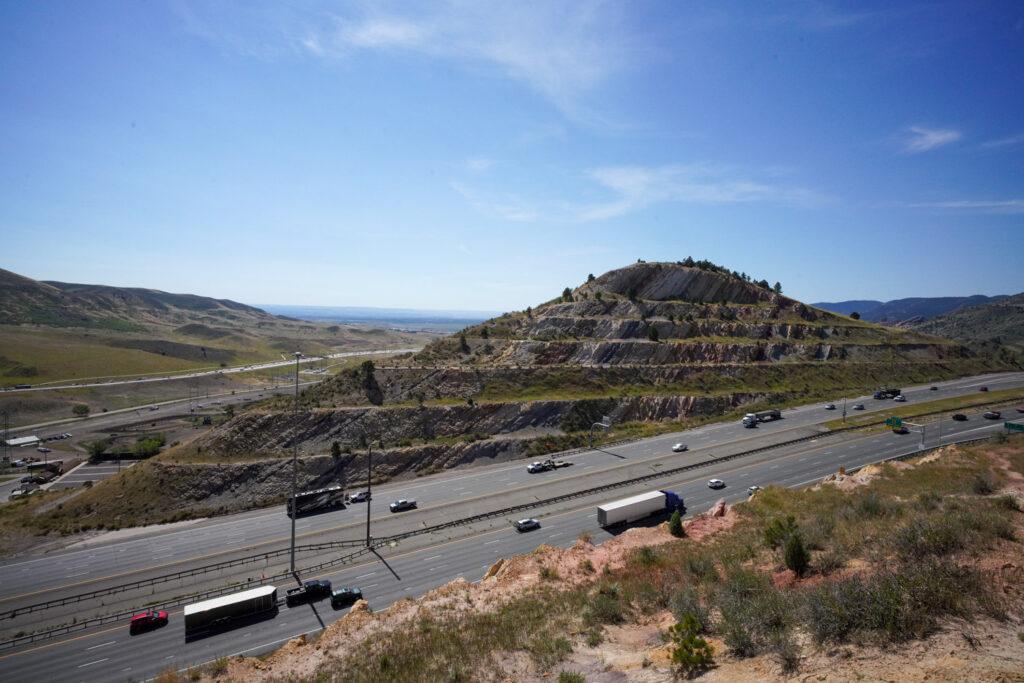
“We’re recalibrating the transportation system,” said Rachel Hultin, director of sustainable transportation at the advocacy group Bicycle Colorado and mayor pro tem of Wheat Ridge. “As a representative of my community, what I hear the most is people want to see investments in safer places to walk and ride a bike.”
DRCOG staff estimate the proposed changes, in addition to other measures like signal timing improvements, would reduce greenhouse gas emissions by about 10 percent compared to levels estimated from its existing plans.
“We’ve been very intentional not to, sort of, cook the books,” Papsdorf said. “I want our staff to stand up and be proud of the planning work that they’ve done.”
Matt Frommer, a senior transportation associate for the Southwest Energy Efficiency Project, told the DRCOG board in July the new plan “encouraged and inspired” him but urged it to go farther.
“I’d like to suggest that we treat [reduction targets] as a floor, not a ceiling,” he said, referencing an RMI analysis the U.S. needs to reduce vehicle miles traveled by 20 percent to limit warming.
But some Denver-area highway expansions would remain the new long-term plan, including new toll lanes on Interstate 270 in Commerce City, I-25 north of Denver, and I-70 at Floyd Hill west of Denver. About a dozen urban arterial streets would still be expanded, too.
CDOT and the Fort Collins-Greeley area planning organization are also updating their transportation plans to fit in their own emissions budgets. Staff in Fort Collins are recommending reducing public transit fares in the area by half.
If approved, these revamped projects could change how people move around the Denver region — and how they live.
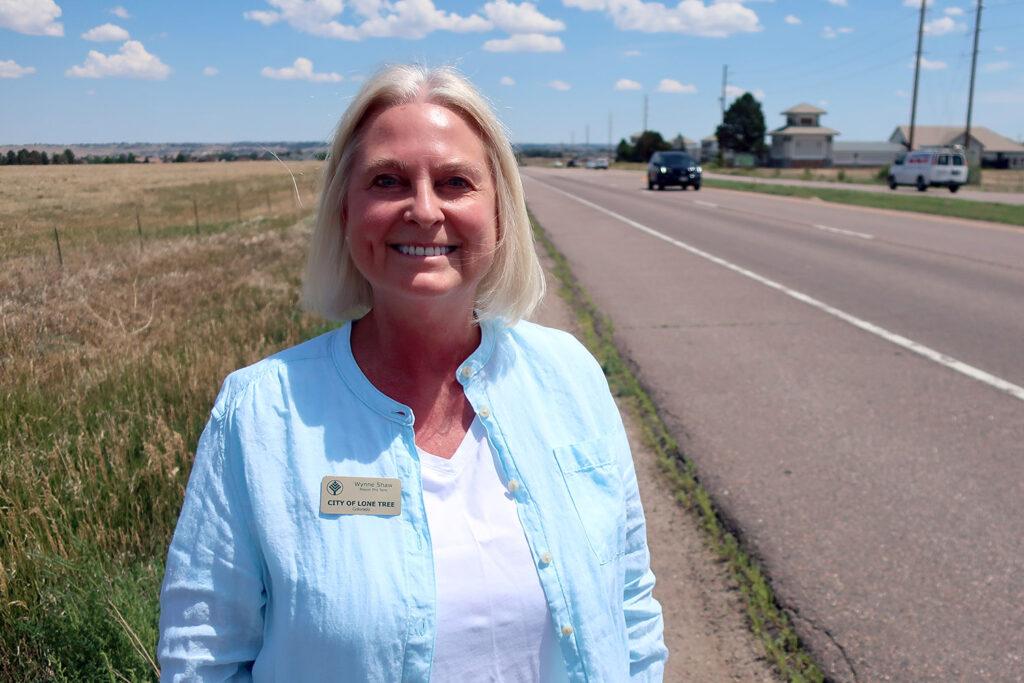
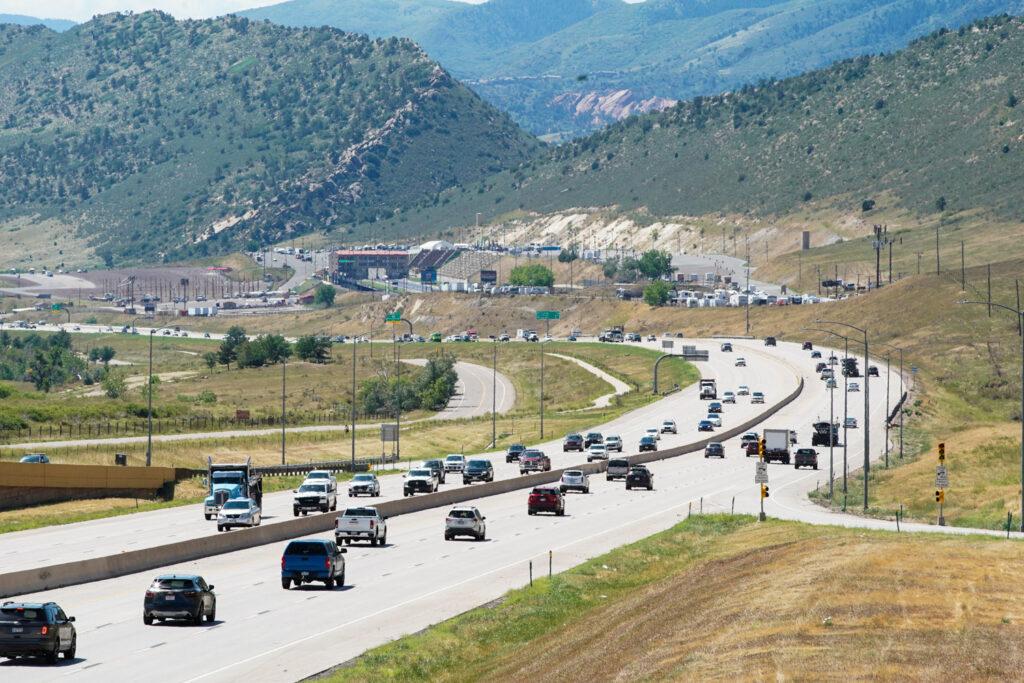
Lincoln Avenue is a busy four-lane road on the southern fringe of the Denver metro that travels through open fields and low-slung sprawl. Transit is limited to an hourly RTD bus that services desolate stops, some of which are nothing more than posts in the dirt. The road has no bicycle lanes, and long stretches have no sidewalks.
Cars are the only safe way to travel the road, said Lone Tree Mayor Pro Tem Wynne Shaw — and she’s eager to see that change.
“We really think that being able to add those pedestrian and bike facilities as this area begins to develop allows people from Parker to come toward Lone Tree and vice versa, safely,” said Shaw, who also sits on the DRCOG board.
For years, Lone Tree has taken a relatively urban approach to transportation. It was instrumental in helping RTD extend a light rail line by three stops into the city. Planners also have ambitious plans for new, dense neighborhoods stuffed with apartments and for-sale homes, restaurants, a new grocery store, and other retail. While they won't be car-free, Shaw said, they will help new residents not rely on cars for every trip outside their homes.
“This is what really makes sense,” she said. “You try to build the infrastructure first so that you can build the city around it.”
State officials, as evidenced by recent legislation and advisory documents, are nudging more local governments to follow Lone Tree's lead and create transportation plans that are a magnet for denser mixed-use developments that don't require driving to live.
But some local officials who control land use policies believe the state’s push will backfire.
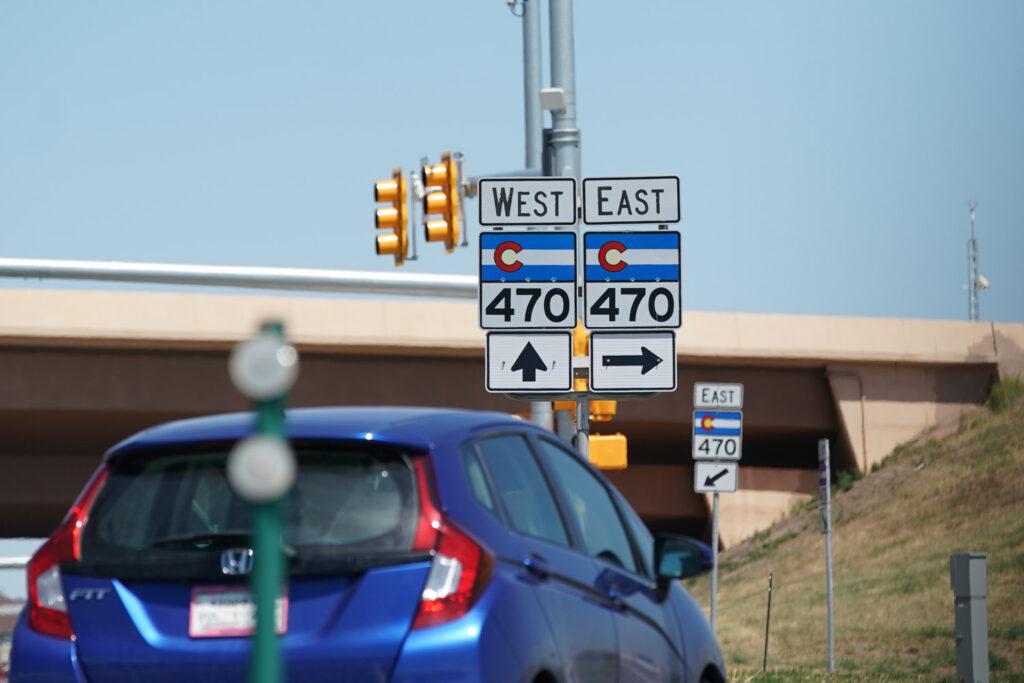
Teal, the Douglas County Commissioner, believes dense areas with more homes and businesses served by narrow roads will make life more difficult for residents used to driving everywhere. In suburban communities at the fringes of metro areas, local governments will continue to allow sprawl, he said — and he anticipates new residents will follow.
“People will vote with their feet. People will follow their checkbooks,”Teal said. “I think we’re going to see once again, just like in the 1950s, 1960s, hollowing out of our metropolitan cores and expansion on the periphery of our metropolitan areas.”
One difference between then and now, though, is that the federal government bankrolled massive highways that blasted through cities to enable the sprawl of the 20th century. The U.S. Department of Transportation has reversed course and is now encouraging states not to spend new federal money on general-purpose lane highway expansions — and CDOT and DRCOG appear to support that.
DRCOG is currently accepting public comments on its new plan. The board is scheduled to vote on Sept. 21.








